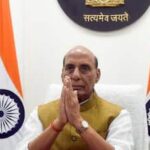Apart from breast cancer, ovarian cancer is one of the most critical health threats to women in India. According to NLM, “Ovarian cancer has emerged as one of the most common malignancies affecting women in India and has shown an increase in the incidence rates over the years.” It ranks as the third most common gynaecological cancer in the country, following breast and cervical cancer. Dr Prinka Bajaj, MBBS, DNB-OBG, Senior Consultant Fertility Specialist, Oasis Fertility, says, “Often called a silent killer, ovarian cancer develops with minimal or vague symptoms—such as bloating, pelvic pain, abdominal discomfort, or frequent urination—that are frequently mistaken for routine menstrual or digestive issues. As a result, it is frequently diagnosed only at advanced stages.”
Ovarian cancer begins when abnormal cells in the ovaries multiply uncontrollably, damaging healthy tissue and spreading rapidly. Dr Prinka says the absence of specific early signs and the lack of effective screening tools—unlike mammograms for breast cancer or Pap smears for cervical cancer—make early detection exceptionally difficult.
“One of the biggest hurdles is a widespread lack of awareness. Many women are unfamiliar with the risk factors, which include a family history of ovarian or breast cancer, BRCA1 and BRCA2 gene mutations, endometriosis, advancing age (especially over 50), and hormone replacement therapy,” expalins Dr Prinka. Without proper knowledge of these risks, women may ignore persistent symptoms or delay medical consultation, missing the window for early diagnosis.
Dr Prinka says this lack of awareness stems from several systemic issues:
In many Indian communities, reproductive health remains a taboo topic. This prevents open conversations and discourages women from seeking timely help.
Women in rural and underserved regions often lack access to accurate health education and resources.
With issues like maternal health, malnutrition, and infectious diseases taking precedence, gynaecological concerns often receive inadequate attention.
Even when diagnosed, access to treatment presents another challenge. Dr Prinka further explains, “Specialised oncology care is often unavailable in tier 2 and 3 cities, and treatment costs—covering surgery, chemotherapy, or targeted therapy—can be financially crippling. Many women do not have insurance or financial support, leading to delayed or incomplete treatment. A shortage of cancer specialists and infrastructure in non-urban areas further deepens the crisis.”
To address these challenges, she emphasises, “India needs a comprehensive and multi-pronged approach.”
Mass outreach programs must educate women on symptoms and risk factors, promoting early medical check-ups.
For women with a family history of related cancers, affordable and accessible BRCA testing and genetic counseling can be life-saving.
General practitioners and primary care providers should be trained to recognise early signs and refer cases promptly.
Dr Prinka says, “Investment in ovarian cancer research is essential to develop early detection methods and improve treatment outcomes.”
Open conversations around reproductive and gynaecological health must be encouraged to break the silence and remove shame.
Lastly, Support groups for women act as a viable solution in this context as survivors often face long-term physical, emotional, and financial burdens. More patient advocacy, psychological support, and survivorship programs are urgently needed to ensure holistic care.
Ovarian cancer is a silent epidemic that too many Indian women are fighting without the knowledge or support they need. Dr Prinka explains, “By prioritising awareness, early detection, accessible care, and post-treatment support, India can take vital steps toward reducing the toll of this often-overlooked disease. It’s not just about treatment—it’s about empowering women to safeguard their health and their futures.”
Stay informed on all the , real-time updates, and follow all the important headlines in and on Zee News.








